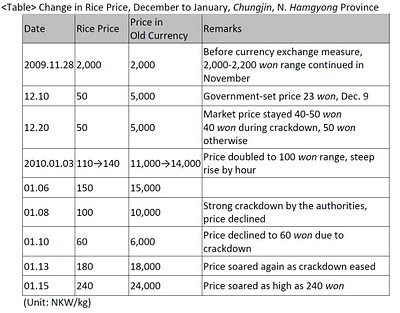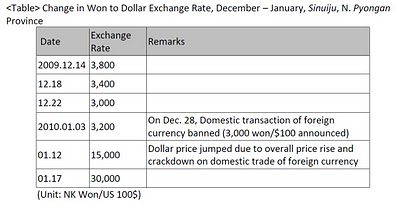I posted last year about a British Korean War pilot who is buried in North Korea. This got me interested in MIAs (missing in action) in the Korean War more generally, particularly Americans as there was in the 1990s rather surprisingly a joint US-North Korean programme to recover their remains.
This Clinton-era project foundered after a few years, not at all surprisingly, but there are now, equally surprisingly, signs the North Koreans want to revive it.
Admiral Robert F. Willard, the head of U.S. Pacific Command, said on Jan 27: “We’re going to enter into discussions with [North Korea] [about MIAs]. That is what we know right now.”
“They are willing to talk about it and we’re willing to address the particulars with them.”
“It’s a complex problem. We’ve been in (North Korea for recovery missions) before, and it appears that we’re being invited to consider going back again,” Willard told reporters at Camp Smith, Hawaii, according to the Honolulu Advertiser. “It’s something that we’ll take seriously and we’ll enter into dialogue with them and find out where it will lead.”
No date has been agreed on restarting the search for the remains. More than 8,100 Americans remain unaccounted for from the Korean War, according to the Department of Defense.
During Operation GLORY in 1954, North Korea returned the remains of over 2,000 Americans, the Department of Defense says .
“Between 1954 and 1990, the U.S. was not successful in convincing North Korea to search for and return additional U.S. remains,” the Defense Prisoner of War/Missing Personnel Office (DPMO) states on its website.
“However, from 1990 to 1994, North Korea exhumed and returned what they claimed were 208 sets of remains. Unfortunately, their records and recovery methods have hampered U.S. efforts to identify most of these. The North Koreans co-mingled the remains and the associated personal effects. These difficulties underscored clearly the need for joint field activities in which U.S. expertise would guide the recovery process and improve the identification results.”
Larry Greer, director of public affairs of the DPMO in Arlington, VA, confirmed to me that the North Korean army “informed the United Nations that they were willing to talk about remains recovery operations. That was at a Panmunjom meeting on the 26th [Jan], our time. The U.S. has not yet responded.”
The US military newspaper Stars and Stripes last year quoted a US Defense Department anthropologist who had taken part in the hunt for MIA remains in the North as saying he was frustrated that the operation north of the border had been suspended.
“I am always disappointed when politics interfere with human rights and bringing closure to families whose relatives died in Korea so long ago,” said Jay Silverstein during a search for remains in South Korea close to the border with the North.
He said he hoped some day to return to North Korea to continue to search for the remains of U.S. service personnel. “I found the North Koreans very pleasant to work with,” said Silverstein, who was overseeing the excavations in Hwacheon county about eight miles from the border with North Korea.
“My experience was very positive. It gave me a lot of hope for the future … that relations between the North and the South and the West and the rest of Asia will someday be improved.
“I found [the North Koreans] to be very reasonable people. Very friendly. We could sit down and have a beer, or smoke a cigar, and talk. It was quite pleasant,” he added. [Surely the first time a US military official has ever said anything nice about North Koreans? Ed]
Apart from the suspended agreement with North Korea, the United States reached an agreement with China in 2008 “to formalize research in Chinese archives on Korean War POW/MIA matters.”
The Chinese side seems to have been reluctant to share much information with the Americans so far, but the Chinese news agency Xinhua reported last October that “Chinese military archivists have identified more than 100 documents that could lead to the repatriation of the remains of the United States personnel who disappeared during and after the Korean War”.
It added that “China’s People’s Liberation Army (PLA) Archives Department has been combing more than 1.5 million archives of the then People’s Volunteer Army (PVA), the Central Military Commission (CMC) and the PLA headquarters during the Korean War.
“Archivists have given at least four valuable archives found in the first 10 percent to the Defense Prisoner of War/Missing Personnel Office (DPMO) of the U.S. Department of Defense.”
The Chinese report mentioned how archivists had located the site where a U.S. bomber crashed in 1950 in the southern province of Guangdong. “After visiting the site and interviewing 19 witnesses who helped them identify the burial site of U.S. crew, they believe the possibility of finding the remains is high,” it added.
The DPMO’s Greer said that “We are making slow steady progress” in the joint archive project.
He said that in September 2009 the US hosted six PLA archivists for annual discussions and to review arrangements, and that the archivists provided additional information on the Guangdong crash site which was part of their annual report in June 2009.
In October 2009, General Xu Caihou 徐才厚, vice-chairman of the PLA’s Central Military Commission, presented four Chinese-language documents to Defense Secretary Robert Gates during a visit to Washington.
“The documents concerned the Guangdong site and a F-86 Korean War crash site in China about which we were already aware.We have requested permission to investigate the Guangdong Province crash site in April this year,” Greer told me in an email.
“At the September 2009 meeting we also discussed amending our arrangement to facilitate the transfer of actual documents from the PLA archives to us and to permit joint PLA archives-DOD accounting community remains recovery work in China. The amendment process is underway now, but not final,” he added.
The South Koreans, who lost tens of thousands of soldiers in the war, would also like to hunt for their remains in the North.
President Lee Myung-bak said in a New Year’s address this would be an appropriate way to mark the 60th anniversary of the start of the Korean War.
But relations between the two Koreas are so frigid that I would lay a much bigger bet on the US search for MIAs restarting than on a similar agreement being signed between Pyongyang and Seoul.
With many thanks to Daily NK for drawing my attention to North Korea’s interest in reviving the MIA search.



